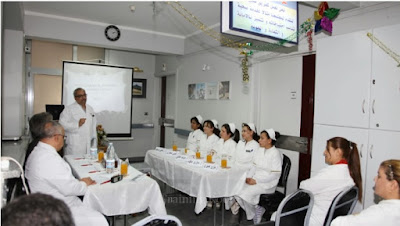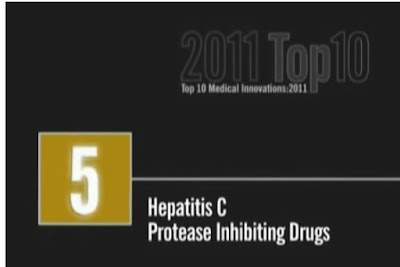Médecins Sans Frontières (MSF) is an international, independent, medical humanitarian organisation that delivers emergency aid to people affected by armed conflict, epidemics, healthcare exclusion and natural disasters. MSF offers assistance to people based only on need and irrespective of race, religion, gender or political affiliation.
Médecins Sans Frontières set up the MSF Access Campaign (AC) in 1999 to address systemic challenges and improve access to existing medical tools (medicines, diagnostics and vaccines) and to stimulate the development of urgently needed better tools for people in countries where MSF works and beyond. The priorities of the Access Campaign are guided by the medical challenges faced by MSF and its patients in its operational settings. The primary objectives of the Access Campaign include identifying, analysing and advocating for changes around the legal and regulatory systems and practices that hinder access to medical tools and innovation suitable for people in need especially in resource limited settings.
PLACE IN THE ORGANISATION
The TB/HIV/HCV Medical Advisor reports directly to the Medical Coordinator of the Access Campaign. The advisor is the point of contact within MSF AC for the MSF movement and external actors on issues related to TB/HIV and
HCV within the objectives defined in the Terms of Reference (ToR).
OBJECTIVES OF THE POSITION
The MSF Access Campaign’s TB/HIV/HCV Medical Advisor works on access and advocacy issues pertaining to access for treatment and development of new tools (treatments and diagnostics) for drug sensitive and resistant TB, HIV and HCV disease.
The TB/HIV/HCV medical advisor is the focal point within the Access Campaign, working with a cross disciplinary team of specialists (pharmacists, diagnostics, policy, advocacy and communications that are based in a number of bases across Europe and the US). The medical advisor also plays a role in strategy development, reporting and representation.
MAIN RESPONSIBILITIES
The core responsibilities of the current position are defined by these priority dossiers: tuberculosis (TB), human immunodeficiency virus (HIV) and hepatitis C virus (HCV). The main activities in each dossier are summarized below:
TB (approx. 50%)
The TB dossier is an ongoing dossier. The medical advisor will work closely with the campaign team, key individuals within MSF headquarter and operations, and external experts to develop and implement the core priorities of the TB Dossier.
These include:
Improving the diagnosis and management of TB in HIV co-infection and other key populations
Increasing access and affordability to new medicines and ensuring early access to pipeline drugs and promising phase 2 drugs for regime trials.
Increasing access to medicines paediatric TB care, and
Increasing access to effective medicines and diagnostics to improve drug-resistant TB management.
Support and advocacy on the adoption of optimal tools, models of care and policies and there inclusion in the national guidelines of countries where MSF operates.
Supporting the ongoing policy and advocacy priorities within the TB dossier in collaboration with the MSF technical working groups and operations.
HIV/
HCV dossier (40-50%)
The HIV dossier within the Access Campaign is managed by a core interdisciplinary team of pharmacists, medical doctor, policy advocate, diagnostics expert and a communications officer. The Geneva based team works closely with the India, China and Brazil based Access Campaign teams.
Much has changed in recent years in the external environment, new actors, challenges and threats have impacted on the access to medicines arena within countries and at international level. There have been trends towards tighter legal restrictions on access to medicines produced in middle income countries. As such the HIV strategy focuses on the following areas:
Access to and development of adapted formulations and new drugs in ARV pipeline
Co-infections prioritizing TB and hepatitis and integration of care as well as the identification/treatment of mono infected Hepatitis patients where pertinent to MSF operations.
PMTCT and paediatric access to formulations
Diagnostics
The Access Campaign works closely with the MSF international HIV AIDS working group, the HCV contact group, operational and medical departments in this regard.
Priorities for the medical advisor include:
Follow and implement the new Access Campaign HIV dossier objectives to ensure continuity and communication with internal (AIDS Working Group, Laboratory Working Group) and external contacts. (note these strategic priorities will be reset for the period 2017-20 in the coming months)
Work closely with the policy team, pharmacist and the diagnostic advisor to define and implement objectives related to diagnosis and ARV pipeline and provide technical support. Vigilance on emerging resistance in both disease areas and the rational use of new agents.
Identify external and internal opportunities within the context of the action plan objectives to move forward on the HIV/
HCV agenda
Represent MSF Access Campaign at specific external technical meetings or conferences where medical input is required.
REQUIREMENTS OF THE POSITION
The ideal candidate will possess the following skills and experience:
Medical doctor
Experience working in resource-limited settings, ideally with MSF
TB/HIV program experience at international or national level
Strong knowledge synthesis skills (including literature reviews)
Understanding of access to medicines priorities for TB/HIV in the developing world
Excellent communication and team working skills
Willingness to speak at public events when required on behalf of MSF
Available for overseas travel most likely to international conferences, internal meetings and/or field trips depending on requests.






















